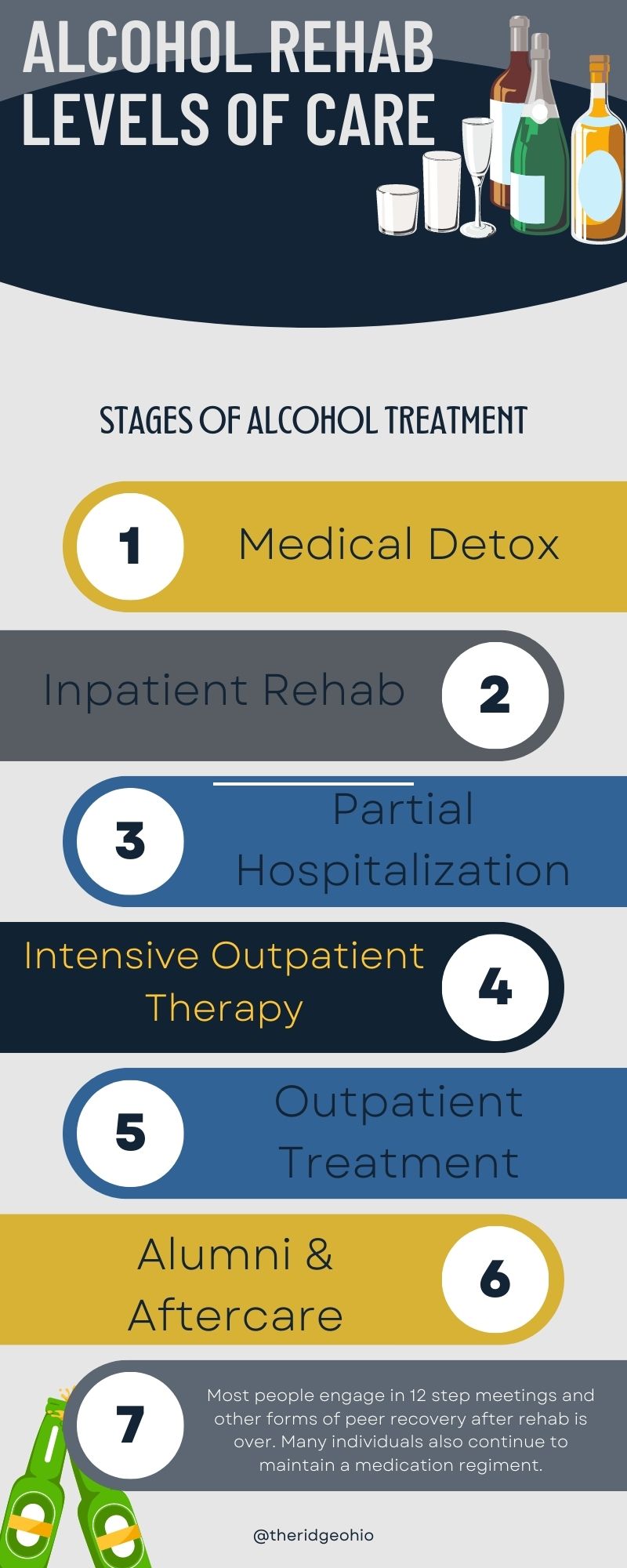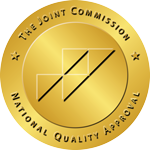Alcohol use disorder, also known as alcoholism, is a family disease, meaning it affects more than just the individual. Parents, children, siblings, co-workers, and friends all suffer along with the alcoholic, frustrated at seeing the person self-destruct and ruin their lives.
While alcohol abuse is a serious disease, it is a treatable one. It takes determination and dedication to the program, but those who seek help and are ready to make a change find that it is possible to achieve sobriety. With the right kind of support and treatment, individuals can learn how to put their past and their drinking behind them.
Our Program Focuses On Immediate Treatment While Developing Strategies and Life Skills To Maintain Long-Term Sobriety
How To Choose An Alcohol Rehab Treatment Program
There are countless alcohol treatment centers in Ohio, but not all facilities will provide the same results. When seeking a good treatment program, individuals and families should consider several factors:
What Levels Of Care Are Offered During Alcohol Rehab?
Alcohol recovery is a long and sometimes complicated process, and it is beneficial to have caring staff to lead a person through it. The Ridge starts individuals out with supervised detox at our facility, or medical detox at a hospital facility when necessary. Then we help clients work on their sobriety through therapy, counseling, dual-diagnosis treatment for those struggling with mental health, and other programming.
Once the individual has become stable enough to step down from inpatient therapy, we are able to offer outpatient therapy. Finally, long-term care is vital to continued success, and we connect alumni with support systems to ensure long-term success. Benefits of the continuum of care that The Ridge offers include consistency, convenience, and maintaining sobriety.

Medical Detox
Medical detox is the first step in alcohol rehab. It is a supervised process that involves the use of medications to help the body eliminate the toxins associated with alcohol. This level of care is essential as it helps to manage the withdrawal symptoms that people experience when they stop drinking. Medical detox for alcohol is typically provided in an inpatient or outpatient setting, depending on the severity of the addiction.
Inpatient Rehab
Inpatient rehab, also known as residential rehab, is a level of care that involves the patient living in a treatment center for a set period of time. Inpatient alcohol rehab is beneficial for individuals who need intensive care and support. During this level of care, patients receive 24/7 medical and emotional support, participate in therapy sessions, and learn coping skills to manage their addiction.
Partial Hospitalization
Partial hospitalization is a level of care that is less intensive than inpatient rehab, but more intensive than outpatient care. Patients attend therapy sessions and treatment programs during the day but go back to their homes or a sober living facility at night. Partial hospitalization is suitable for individuals who have completed inpatient rehab or have a supportive home environment.
Intensive Outpatient Treatment
Intensive outpatient treatment is a level of care that allows individuals to receive treatment while maintaining their daily routine. Patients attend therapy sessions and treatment programs a few times a week for a few hours. This level of care is ideal for individuals who have completed partial hospitalization or for those who have mild to moderate addiction.
Outpatient Treatment
Outpatient treatment is the least intensive level of care for alcohol rehab. Patients attend therapy sessions and treatment programs on an as-needed basis. This level of care is suitable for individuals who have completed the more intensive levels of care and are transitioning to normal life.
Alumni Programming
Alumni programming is a level of care that provides ongoing support and resources for individuals who have completed alcohol rehab. This level of care helps individuals maintain sobriety and prevent relapse. Alumni programming can include support groups, mentorship programs, and ongoing therapy sessions. Alumni programming is not a formal level of care that is billed through insurance, instead, it is a peer recovery group that helps individuals engage in community and sobriety together.
Call (513) 457-7963 now to learn more about our treatment programs!
Is The Alcohol Rehab Center Certified & Accredited?
There are various certifications and licenses treatment centers and their staff can obtain, and it is important to check with the facility before you enroll to learn about their certifications. Each state has its own requirements for licensing, and organizations like the Joint Commission provide further certifications and requirements. The Ridge is fully licensed in the state of Ohio, and we are Joint Commission certified, meaning we are held to the highest standards for care, services, and safety.
The Ridge Ohio Offers a Premium Alcohol Rehab Program and you can view the amenities and program details in this short video:
What Are The Dangers of Untreated Alcohol Abuse?

Alcoholism is a dangerous and life-changing disease. If left untreated, it will completely control the individual’s life, putting their relationships, health, financial status, reputation, and well-being in danger.
- In 2014, alcohol-impaired driving fatalities accounted for 9,967 deaths (31 percent of overall driving fatalities) (National Highway Traffic Safety Administration).
- Alcohol-related car crashes occur every 48 minutes in the United States, and there are about 30 deaths each day as a result.
- A 2009 study by Hingson et al. stated that 3,360,000 students aged 18 to 24 drive while under influence.
Alcohol abuse leads to injury and death:
- An estimated 88,000 people (approximately 62,000 men and 26,000 women) die from alcohol-related causes annually, making alcohol the third leading preventable cause of death in the United States (Centers for Disease Control).
- One-third of deaths resulting from alcohol problems take the form of suicides and accidents such as head injuries, drowning incidents, and motor vehicle crashes.
Continuing to live with an alcohol abuse problem is costly. Individuals with an alcohol addiction spend large amounts of money buying alcohol, and individuals and their families spend large amounts of money dealing with the consequences of alcoholism. Emergency room visits, health care costs, legal fees, fines, and repairs to cars and property are all common costs experienced by families of those who abuse alcohol.
How Much Does Alcohol Rehab Cost?
Alcohol programs for recovery cost different amounts based on their services and levels of care. On Average treatment can cost between $15,000 and $45,000 much of which may be covered by insurance.
- In 2010, alcohol misuse cost the United States $249.0 billion (American Journal of Prevention Medicine).
- In 2005, there were more than four million emergency room visits and more than 1.6 million hospitalizations related to various alcohol problems.
- Over 1.4 million drivers were arrested for DUIs in 2009, which is less than one percent of the 147 million number of self-reported alcohol-impaired driving episodes in America each year.
- Each year, alcohol-related motor vehicle crashes cost the United States more than $51 billion.
Not only are there financial costs associated with drinking too much, but trouble manifests itself in the rest of the person’s life as well. Relationships with spouses, children, parents, siblings, and friends all suffer as the individual exhibits irresponsibility, selfishness, anger, and even violence. Work productivity usually decreases for someone who has an alcohol problem because they either miss work because of their drinking or they don’t perform their job as well as they should because they are impaired or hung over. Students who struggle with alcohol abuse usually see a sharp drop in grades and lack of engagement in normal activities.
What Should You Expect From An Alcohol Rehab?
The first step of any alcohol treatment program should be an assessment. During this time, skilled professionals will evaluate the individual and their history, their drug and alcohol use, their physical health, mental health, and support system. Based on the assessment, the team of professionals will determine a level of care that will meet the person’s unique needs and provide the very best chance at success.
The next step is often detox. During the assessment, the treatment team will help determine what kind of detox is necessary for the person. Some people on certain substances can detox safely with moderate supervision at a regular treatment facility. Others require the presence of medical staff and equipment, as in a hospital setting, in case serious and life-threatening side effects arise. Substances such as benzodiazepines (some sedatives and sleep aids) and alcohol can lead to dangerous side effects as the person withdraws. The Ridge provides safe medical detox.
Once the individual has safely detoxed from alcohol, they are ready to continue their recovery with therapy and counseling. There are many different methods used in this process, and treatment providers that are skilled in several different therapy methods will ensure clients are getting the very best personalized care. Cognitive behavioral therapy, family therapy, community support groups, art and music therapy, and many other types of sessions and activities help individuals develop ways to deal with triggers and manage stress while maintaining their sobriety.
Group and individual therapy sessions are offered in both inpatient and outpatient therapy. As the individual becomes more stable in their sobriety and gets closer to going back to their lives, they can step down from the more supervised inpatient care to outpatient therapy. Once the individual has completed his or her formal treatment program, they should remain connected to the recovery community through alumni programming, therapy sessions, and support group meetings in order to receive the support they or need as they or ease back into their life.
How Common Is Alcohol Abuse?

- 1 million adults ages 18 and older (6.2 percent of this age group) have an alcohol use disorder. This includes 9.8 million men (8.4 percent of men in this age group) and 5.3 million women (4.2 percent of women in this age group) (SAMHSA).
- Approximately 53 percent of Americans have one or more close relatives who have an alcohol dependency problem.
- 43 percent of American adults have been exposed to the problem of alcoholism in the family, either as something they grew up with or something they experienced with a spouse or a partner.
- According to the Centers for Disease Control and Prevention, nearly 51 percent of American adults are current regular drinkers (who had consumed a minimum of 12 drinks in the past year), and 13.6 percent are current infrequent drinkers (who had consumed anywhere from one to 11 drinks in the past year).
Alcoholism affects children as well as adults:
- An estimated 623,000 adolescents ages 12–17 (2.5 percent of this age group) have an alcohol use disorder. This number includes 298,000 males (2.3 percent of males in this age group) and 325,000 females (2.7 percent of females in this age group) (SAMHSA).
- 62 percent of underage high school seniors have been drunk at some point.
- Youth who begin drinking before the age of 15 are twice as likely to abuse alcohol and four times more likely to develop a dependence on the drug.
- An estimated 6.6 million children under the age of 18 live with a parent who struggles with alcoholism.
Get Treatment and Rehab For Alcohol Abuse In Ohio
Unfortunately, only 6.7 percent of adults who had an alcohol use disorder in the past year received treatment, according to the Substance Abuse and Mental Health Services Administration. There are several barriers to treatment that individuals of all backgrounds face.
First and foremost, it is difficult for anyone to admit they need help. Instead of giving in and asking for help, many will try to hide the problem as long as they possibly can. Families join in on this as well. They don’t want to ruin the individual’s or the family’s reputation or admit the problem is too big for them to handle. Those that allow alcohol abuse to continue quickly find that the disease becomes unmanageable and begins to cause more and more problems.
Other barriers to treatment include cost and financial insecurity. Because alcoholism takes such a toll on individuals’ lives and finances, treatment is often seen as too big of a cost to commit to. However, when we look at the cost of sustaining an alcohol addiction, it becomes evident that investing in a treatment program actually saves money in the long run, not to mention saving the individual from heartache, physical ailments, and many other unseen or immeasurable costs.
The best action to take for a loved one who is struggling with alcoholism is to seek help as soon as possible. A trusted facility like The Ridge can help you talk to your loved one, determine their needs, and connect them with the programming they need to get sober and stay sober. We offer intervention services for families that struggle to get their loved ones to accept help.
Infographic

You Might Also Be Interested In
- Alcohol Abuse: Definitions, Causes & Statistics
- Alcohol Detox: Treatment, Symptoms, And Timeline
- The Effects of Alcohol Abuse
- Treatment Plan For Alcohol Use Disorder
- What Are The Different Types of Drinkers?
- The Effects Of Alcohol Abuse
- Alcohol Treatment & Rehab In Ohio
- What To Look For In An Alcohol Rehab Program
- How Genetics Impact Alcoholism
- Why Is Alcohol Use Disorder A Chronic Disease?
- Medication For Alcohol Use Disorder
References:
- Substance Abuse and Mental Health Services Administration. National Survey on Drug Use and Health, 2015. Accessed February 21, 2023. https://www.samhsa.gov/data/sites/default/files/NSDUH-DetTabs-2015/NSDUH-DetTabs-2015/NSDUH-DetTabs-2015.htm#tab5-6a
- Substance Abuse and Mental Health Services Administration. National Survey on Drug Use and Health (NSDUH) 2015. Accessed February 21, 2023. https://www.datafiles.samhsa.gov/study-dataset/national-survey-drug-use-and-health-2015-nsduh-2015-ds0001-nid16894
- Centers for Disease Control and Prevention. Alcohol-Related Disease Impact (ARDI). Accessed February 21, 2023. https://nccd.cdc.gov/DPH_ARDI/Default/Report.aspx?T=AAM&P=f6d7eda7-036e-4553-9968-9b17ffad620e&R=d7a9b303-48e9-4440-bf47-070a4827e1fd&M=8E1C5233-5640-4EE8-9247-1ECA7DA325B9&F=&D=

